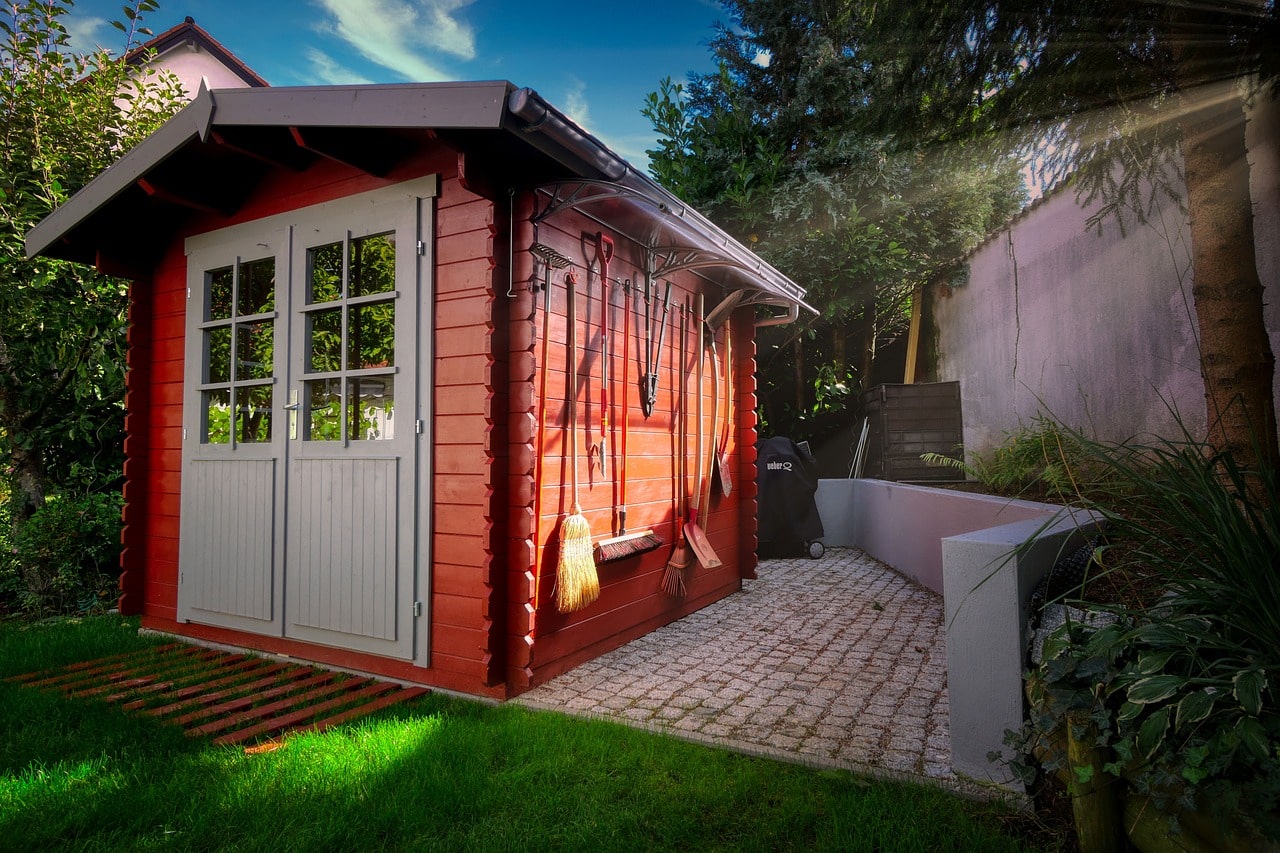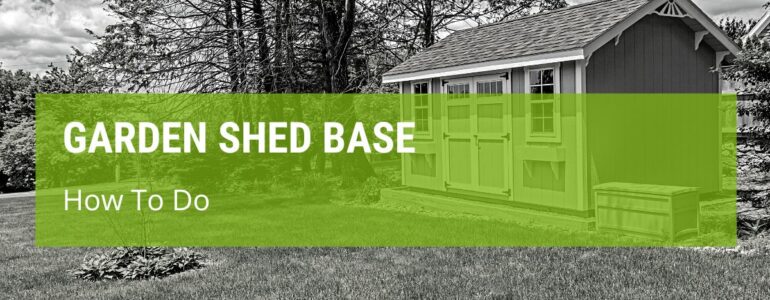Putting up a garden shed is a wonderful thing – it gives you somewhere to put your tools, and it can also be a great way to escape from the madness of life!
However, how to do a garden shed base can stump quite a lot of us. Thankfully, there are a great many way that you can do this so it is safe and effective for years to come. Read on…
How To Do A Garden Shed Base

Although it may seem a little daunting, it’s not actually too difficult to do a garden shed base – there are just a few things that you need to remember.
- Plan where to put it. Make sure that it is in a place that is easily accessible, and that doesn’t get in the way of the rest of your garden plans.
- Choose what material you are going to use – whether slabs, concrete, gravel or a wood base – before you get halfway through the job and realise you should have done something different.
- Make sure that the site you choose does not get a lot of standing water, or your shed may end up a little soggy!
- Uneven ground is not the end of the world as it can be levelled, but you should consider the state of where you are planning to site it.
- Mark out the area before you start, so that you know how much ground you have to clear and level.
- Lay the foundations well, ensuring that the ground is level and that it is situated away from water courses.
What Is The Best Base For A Garden Shed?
There are a lot of different options for your shed base, it may surprise you to know! Concrete? Wood? Straight onto the ground? Let us count the ways!
- Wood. You can easily make a shed base by simply making a wooden platform which is the same size as the shed that you are planning on. This is a relatively easy option, and it offers a sturdy base as well as raising your shed off the damp ground – but do bear in mind that it may not last as long as some other types.
- Concrete. This is a long-lasting solution to a shed base, and it will provide a permanent foundation to stop your shed getting damp. You will need either a cement mixer or to hire someone to do the job for you – this way is a little more of an investment.
- Paving slabs. A fairly cheap and easy option, all you need to so to lay slabs as a shed base is to level the ground, then lay the slabs, then place the shed on top.
It is definitely a good idea to pack the footings with builder’s sand, as this will give the base more stability.
Whatever you choose for your shed base, make sure that it is able to raise the shed up even by a few inches, to stop the damp coming up from the ground.
What Is The Cheapest Way To Build A Shed Base?
Obviously, cost is a consideration with any jobs that you do around the house or the garden, especially in these tight times.
Paving slabs generally works out as the cheapest way to build a shed base, as slabs are generally pretty cheap and you shouldn’t need too many of them.
For a small shed, you should only need 6-12 slabs, and you can often pick them up second hand for even less than new.
As long as you level the ground well, and put down builder’s sand to stop up the gaps, you can have a good sturdy shed base for years to come – with very little expense.
How Do You Prepare Ground For A Shed Base?
When you think of a garden shed, you think of a fairly solid, sturdy shed, right? To achieve this yourself, you need to make sure the ground is prepared.
- Begin by choosing the right spot – go for an area in your garden that you are not using to grow your veggies or prize dahlias!
- Start by clearing the ground of any weeds, rocks and other obstacles, and use a spirit level to help make it evenly flat.
- Mark out the area of your shed using stakes and a string line, then continue to rake and flatten the area inside the string line.
This video is a great way of explaining how to make a garden shed base:
How Do I Stop The Bottom Of My Shed From Rotting?
A shed base starting to rot is a very sad thing, especially if it is a shed that you have built yourself with blood sweat and tears!
Unfortunately, they are very susceptible to this, because of being so close to the ground where the damp can rise up.
The best (in fact just about the only) way to stop your shed base rotting is to lift it away from the ground.
You will need at least a few inches of clearance from the soil itself, whether you lay a concrete base of just have a few slabs.
You can add a little more protection by laying down some plastic sheeting, or a damp proof membrane – this will give your shed base a little more longevity.
Also, try to ensure that you place your shed in a dry part of the garden – there’s no point putting it near a damp place and expecting it to stay dry!
Keep it off the ground, use a properly treated plywood base, maintain proper ventilation – all these things will help to prevent rot.
Final Thoughts
A garden shed is a wonderful thing. Hopefully you now have some great ideas on how to do a garden shed base, so you can enjoy yours for years to come!
Whether you want a shed to store things in, or to use as a potting shed, or just a space to escape from the family for a few minutes, enjoy our tips on how to make yours as good as it can be.







